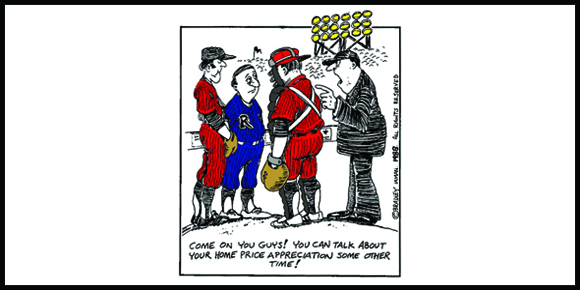Mike Moore, president of the Manitoba Home Builders’ Association, in a recent Winnipeg Free Press New Homes section stated that rising Canadian home prices had to be kept in perspective. As Moore said, it is not a “one-size-fits-all solution,” as all markets are local.
This year, Vancouver and Toronto continue to show demonstrably different results than other major markets across the country. The two cities are witnessing major price increases due to strong demand overwhelming a limited supply of housing. What extent foreign investment is fueling the spike in prices is yet to be determined. Canada Mortgage and Housing Corporation (CMHC) has been tasked by the federal government to investigate foreign investment in Vancouver and Toronto housing.
In May alone, according to the Greater Vancouver Real Estate Board’s Housing Price Index model, the average price of a single-family home in Greater Vancouver shot up 36.9 per cent to $1,513,800. The Greater Toronto area average single home price in May went up 18.9 per cent to $986,691.
Contrast these significant price jumps to Winnipeg, Regina and Calgary.
Winnipeg’s MLS® market kept its slow but steady pace by experiencing a modest increase of 3.1 per cent to $308,112 over the same month last year. Regina’s average house price in May was up two per cent to $326,656 and Calgary’s 3.8 per cent to $562,320.
At the end of 2015, WinnipegREALTORS® created an infographic showing average house prices across major markets in Canada based on 2015 sales activity. It showed Winnipeg had the lowest average house price of $293,992. There is no expectation that Winnipeg’s most affordable average house price status will change in 2016.
All markets vary within each market, too. This is why it is always advisable to contact your local REALTOR® — a real estate expert — to find out how your specific property type is faring. It is also important to understand that the available supply of similar properties, location, age, features and conditions will make a difference in how your particular property sits in relation to the overall market average price changes from month to month.
All the national headlines about house prices going through the roof are really intended for Vancouver and Toronto. Recent stories make a clear distinction the different in major markets within Canada, such as RBC’s June 2016 Housing Affordability Report.
The first headline in the report states, Housing Affordability Takes a Hit in Canada’s Hot Spots, Erodes Mildly in Other Markets in Q1/16. The opening sentence goes further to explain the headline: “The picture for housing affordability continues to show marked divergence by regions across Canada at the start of 2016 ...”
Vancouver was singled out as having the worst-ever recorded affordability measure since RBC began monitoring affordability. According to the report, “Owning a single-detached home at market price in Vancouver area has become out of reach for all but just a minority of higher-income households.” Owning a single-detached home there requires 120 per cent of what RBC considers a typical household income. It’s a little less in Toronto, but RBC said there are “significantly stretched affordability conditions in the Toronto-area’s single-detached segment.”
A much different picture emerges in Winnipeg, Regina and Saskatoon. Affordability for some, or all categories, in the first quarter of this year improved. RBC said housing affordability has been improving in Winnipeg since 2012. This year continues the trend with a 0.4 percentage point drop in the aggregate measure to 29.7 per cent. This is the lowest level in six years.
While demand remains solid, there is plentiful supply of homes to choose from, which is especially the case with condos. With many new condos built in the last few years, there remains a large inventory of units available at present. However, RBC said the demand-supply conditions in Winnipeg are tightening up in the second quarter with the help of strong sales activity. This should firm up pricing going forward.
The aggregate total measure for Saskatoon and Regina were 32.8 per cent and 27.8 per cent, respectively. Vancouver’s aggregate is the highest in the country at 87.6 per cent — jumped 6.5 per cent in the first quarter of 2016.
Winnipeg’s condominium affordability is very favourable at only 21.6 per cent. Only Saskatoon and Edmonton were lower with a measure of 21 per cent. Vancouver is highest at 46 per cent with Toronto nearly 10 points lower at 36.5.
As for single-family homes, Winnipeg’s measure of 31.6 per cent was a drop of 0.7 points from a year ago. The lowest rating is in Regina and St. John at 29.4 per cent.
The RBC Housing Affordability Measure is based on gross household income estimates. An affordability measure of 50 per cent means that homeownership costs, including mortgage payments, utilities and property taxes, takes up to 50 per cent of a typical household’s income.



